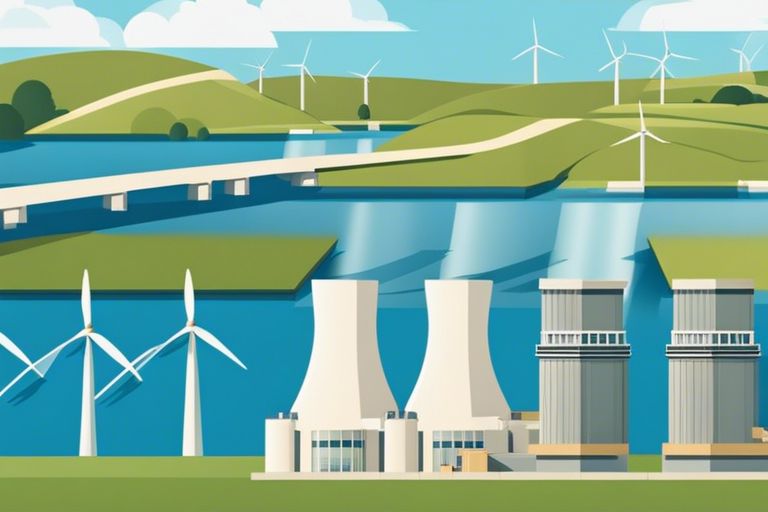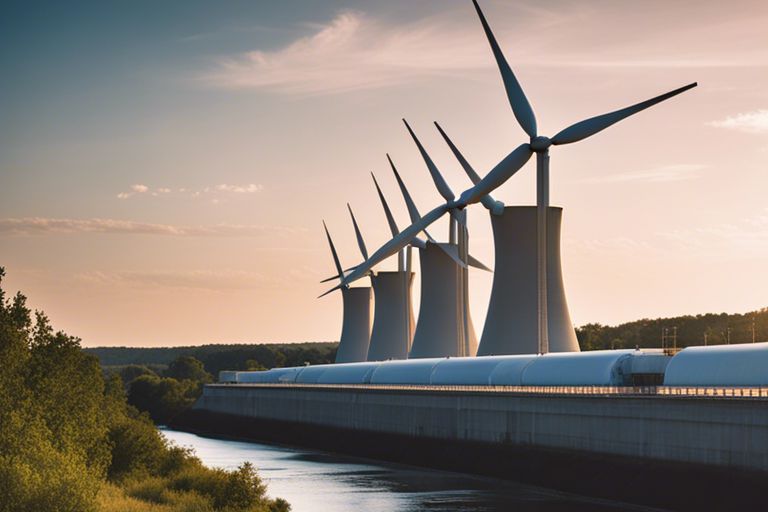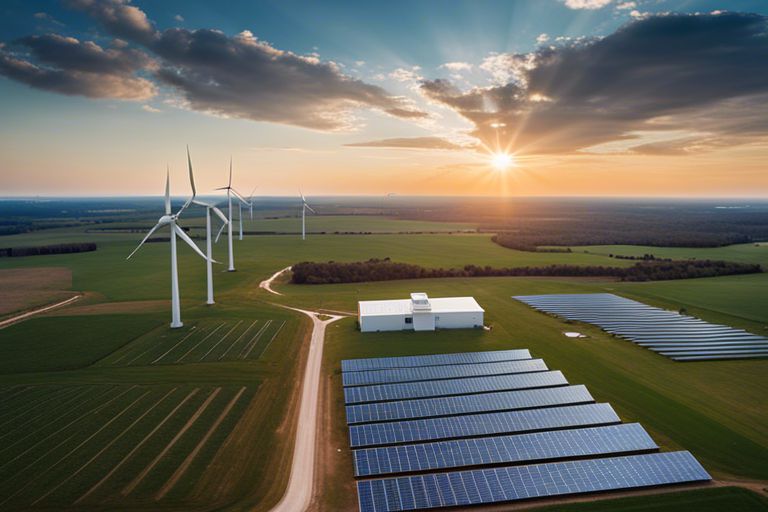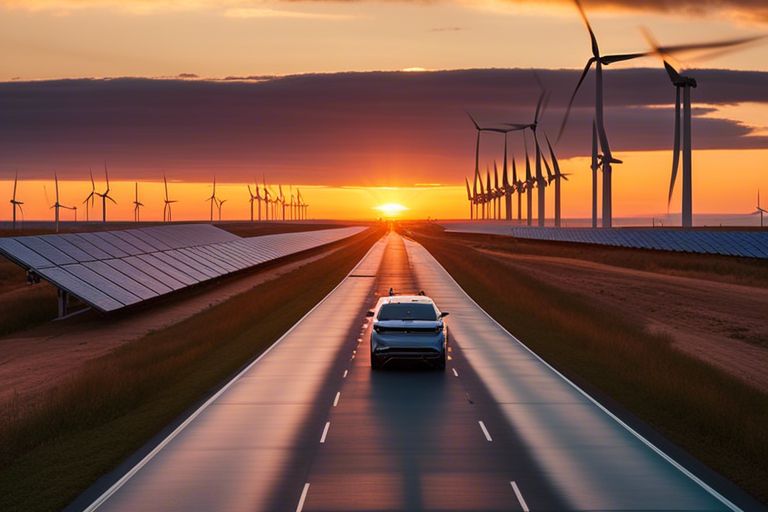You may be wondering if hydropower could be a viable renewable energy option in Oklahoma. While the state is not traditionally known for its abundance of water resources, there are still potential opportunities to harness the power of water for energy generation. Hydropower has the benefit of being a clean and renewable energy source, but it also comes with challenges such as environmental impacts and initial infrastructure costs. In this article, we will explore the feasibility of implementing hydropower projects in Oklahoma, considering the benefits and challenges associated with this form of renewable energy.

Key Takeaways:
- Hydropower potential: Oklahoma has limited potential for large-scale hydropower due to its flat terrain and low annual precipitation levels.
- Small-scale hydropower: Small-scale hydropower projects, such as run-of-river systems, may be more feasible in some regions of Oklahoma.
- Environmental considerations: The impact of hydropower dams on local ecosystems and wildlife must be carefully considered before implementing any projects in Oklahoma.
- Regulatory challenges: The implementation of hydropower projects in Oklahoma may face regulatory hurdles related to water rights, environmental permits, and federal regulations.
- Alternative energy sources: Oklahoma may be better suited to focus on wind, solar, and geothermal energy sources, which have higher potential for generating renewable energy in the state.

Understanding Hydropower
Basics of Hydropower Technology
It is necessary to grasp the fundamental principles of hydropower to evaluate its feasibility as a renewable energy source in Oklahoma. Hydropower is generated by converting the energy from moving water into electricity. This process typically involves water flowing through turbines, which then spin generators to produce electricity. Understanding this technology is crucial for assessing the potential of hydropower in the region.
Types of Hydropower Systems
Hydropower systems can vary in size and design, offering different ways to harness the energy of flowing water. The main types include conventional hydroelectric dams, run-of-the-river systems, and pumped storage. Each system has its unique characteristics and applications, making them suitable for different environments and energy needs. Any potential deployment of hydropower in Oklahoma would need to consider the specific type of system that best suits the local topography and water resources.
| Conventional Hydroelectric Dams | Run-of-the-River Systems |
| Large-scale hydropower projects | Generates electricity with minimal water storage |
| Creates reservoirs and alters river flow | Relies on natural water flow |
| Suitable for flood control and irrigation | Less environmental impact compared to dams |
| Requires significant initial investment | May have lower energy output |
| Pumped Storage | |
| Stores energy by pumping water to higher reservoir | |
| Provides rapid response to peak energy demands | |
| Acts as a backup for intermittent renewable sources | |
| Challenges include high construction costs |
Another critical aspect to consider when assessing hydropower systems is their environmental impact and sustainability. While hydropower offers significant advantages as a renewable energy source, such as zero greenhouse gas emissions and reliability, there are also concerns about habitat disruption, fish migration barriers, and potential for reservoir sedimentation. It is imperative to weigh these important factors carefully before implementing hydropower projects in any region.
Oklahoma’s Hydropower Potential
Geographic and Hydrologic Suitability
Clearly, Oklahoma’s geographic and hydrologic features present challenges for extensive hydropower development. The state’s flat terrain and limited number of rivers with consistent flow rates reduce the suitability for large-scale hydropower projects. Additionally, Oklahoma’s variable precipitation patterns and susceptibility to drought further complicate the reliability of water sources for hydropower generation.
Existing Hydropower Installations
To assess the current state of Oklahoma’s hydropower capacity, it is vital to look at existing installations. The state has a few small-scale hydropower plants, primarily used for irrigation and local power needs. These installations are limited in capacity and primarily serve specific regional demands rather than contributing significantly to the state’s overall energy grid.
Geographically, Oklahoma’s existing hydropower installations are scattered across different regions, with some located in the eastern part of the state where water resources are relatively more abundant. These installations generally rely on small dams and run-of-the-river systems, which have limited environmental impact compared to conventional hydropower dams.
Challenges and Considerations
Environmental Impacts
Unlike some other renewable energy sources, hydropower can have significant environmental impacts. For instance, the construction of dams can disrupt local ecosystems, alter water flow, and affect fish populations. Additionally, the reservoirs created by dams can result in the release of greenhouse gases like methane, contributing to climate change.
Economic and Infrastructure Constraints
Economic feasibility and existing infrastructure pose significant challenges to the widespread adoption of hydropower in Oklahoma. Economic constraints include the high initial costs of building hydroelectric facilities, as well as ongoing maintenance expenses. Furthermore, the state’s current infrastructure may not be equipped to support large-scale hydropower projects, requiring substantial investments in grid upgrades and transmission lines.
Constraints:
While hydropower offers the advantage of being a reliable and consistent source of renewable energy, the environmental and economic considerations must be carefully weighed. Mitigation measures such as fish ladders and eco-friendly dam designs can help address some environmental concerns, but the economic viability of hydropower projects in Oklahoma remains a complex issue that necessitates thorough evaluation.
Future Prospects
Innovations in Hydropower
An exciting development in hydropower is the emergence of new technologies that aim to increase efficiency and reduce environmental impact. Advancements such as fish-friendly turbines, modular hydropower systems, and pumped storage hydropower are reshaping the industry. These innovations not only enhance the generation capacity of hydropower but also address concerns regarding aquatic life and land use, making hydropower a more sustainable option for renewable energy production.
Policy and Incentives for Renewable Energy
On the policy front, Oklahoma is making strides in promoting renewable energy sources, including hydropower, through a mix of incentives and regulations. The state offers tax incentives, grants, and other financial support for renewable energy projects. Additionally, there are renewable portfolio standards in place that require a certain percentage of energy to come from renewable sources. These measures create a favorable environment for the growth of hydropower and other clean energy technologies in the state.
To further encourage the adoption of hydropower, policymakers could consider expanding these incentives and streamlining the permitting process for hydroelectric projects. By providing stronger financial support and easing regulatory burdens, Oklahoma can unlock the full potential of hydropower as a renewable energy source in the state.
To wrap up
Ultimately, hydropower may not be a feasible renewable energy source in Oklahoma due to various challenges such as limited suitable sites and environmental concerns. While hydropower has the potential to provide clean and sustainable energy, the state’s geographical limitations make it difficult to harness this resource on a large scale. However, Oklahoma can still explore other renewable energy sources such as wind and solar power, which are more abundant in the state and have shown great potential for sustainable energy production. By investing in these alternatives, Oklahoma can reduce its carbon footprint and work towards a more environmentally friendly future without relying solely on hydropower.
FAQ
Q: What is hydropower?
A: Hydropower is a form of renewable energy that generates electricity by harnessing the power of flowing or falling water.
Q: Is hydropower a feasible renewable energy source in Oklahoma?
A: Yes, hydropower can be a feasible renewable energy source in Oklahoma due to its rivers and streams that can potentially support hydropower generation.
Q: How does hydropower work?
A: Hydropower works by capturing the energy from moving water and converting it into electricity through turbines connected to generators.
Q: What are the benefits of hydropower?
A: Hydropower is a clean and renewable energy source, produces minimal greenhouse gases, provides reliable power, and can help reduce dependence on fossil fuels.
Q: Are there any challenges with hydropower in Oklahoma?
A: One challenge with hydropower in Oklahoma is the need for adequate water flow in rivers and streams to sustain hydropower generation throughout the year.
Q: What are the environmental impacts of hydropower in Oklahoma?
A: While hydropower is a clean energy source, it can have environmental impacts such as changes in water quality, disruption of aquatic habitats, and potential effects on fish populations.
Q: How can hydropower be integrated into Oklahoma’s energy mix?
A: Hydropower can be integrated into Oklahoma’s energy mix by identifying suitable sites for hydropower development, conducting environmental assessments, and ensuring sustainable water management practices.




